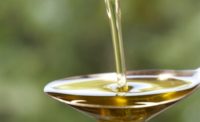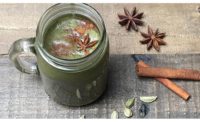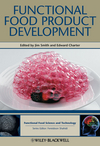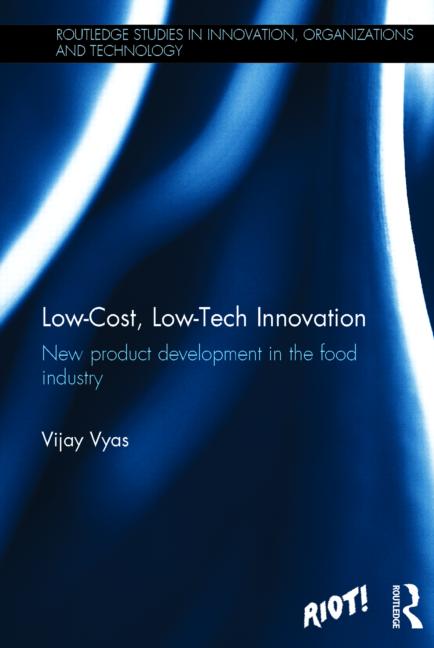Food Product Development Focus: Sweet Foods
Prepared Foods R&D Seminar speakers present several sweetener options

SOURCE: ©iStockphoto/joannatkaczuk

This ultra high-potency sweetener is very stable through the major pasteurization, hot filling and canning processes.
Somewhat less stable at bake temperatures, it can be used in baked goods. These figures were calculated using an estimation equation.
SOURCE: Ajinomoto

Revolutionary yeast extract enhances creaminess and mouth fullness in lower fat products; and it enriches sweetness and reduces powdery notes often found in dry milks. In a full-fat control beverage compared with a low-fat version, and a low-fat version containing revolutionary yeast extract at 0.15%, sensory evaluation found the yeast extract sample to be preferred over the control when rating mouth fullness, creaminess, sweetness, body and powdery notes.
SOURCE: Kohjin Life Sciences

In addition to sugars, minerals and moisture, honey also contains minor amounts of protein. Some of this honey includes numerous enzymes which vary greatly by floral source, season and blending of the honey. Diastase is an amylase, typically found in low quantities, that breaks down starches. Glucose oxidase is also found; it oxidizes glucose in un-ripened honey, yielding gluconic acid, a precursor of hydrogen peroxide, which contributes to honey’s antibacterial properties.
SOURCE: National Honey Board




Ultra High-potency Sweetener
Research done by Ajinomoto has resulted in a new sweetener and flavor enhancer, which is a molecule derived from vanillin and aspartame. When screening for development, the company looked at hundreds of compounds—first for sweetness potency, taste and availability of synthesis process.
Approximately 10 candidates were selected for a second screening, where again sweetness potency was evaluated, along with a more detailed look at the taste profile; the physical and chemical properties; potential of industrial production; and estimation of metabolic dynamics in the human body by in vitro assay. After narrowing it down, the chosen candidate has structural similarities to sweeteners of natural origin.
“As a sweetener and flavor enhancer, this proprietary, ultra high-potency sweetener is about 20,000 times sweeter than sugar and 100 times sweeter than aspartame. With a clean taste and sweet aftertaste, it has similar stability in liquid applications to aspartame. In many applications, it can help reduce cost with partial substitution of sugar, HFCS or other high-intensity sweeteners—while maintaining the desired level of flavor. It also helps improve the taste of sucralose, when they are used together, and it also masks the off-notes of stevia. In chewing gum, it is known for its positive effect on the longevity of sweetness,” stated Ihab Bishay, senior director, Applications Development, for Ajinomoto North America, Inc., Nutrition & Health, in a Prepared Foods’ R&D Applications Seminar presentation titled “Advantame: A New Ultra High-potency Sweetener.”
“HFCS substitution by this proprietary sweetener, in a lemon-lime carbonated soft drink, tested by triangle sensory method with 15% panelists showed that 55% of them could not distinguish between the HCFS and [the proprietary] samples,” Bishay added. The replacement ratio is different for a soft drink vs. a carbonated soft drink, and Bishay advised using the triangle test method to find the right balance. Substitution ratio may be increased by adding other ingredients. Ajinomoto has accumulated various applications in their library.
In carbonated soft drinks, the sweetener retains 80% sweetness after eight weeks and up to 60% at 20 weeks. In yellow cake, after baking and five days of storage, 66.7% sweetness remained. Under heat treatment, such as pasteurization, hot filling and canning, it remained 96-99.9% stable, depending on times and temperatures.
Functioning as a flavor enhancer, a qualitative analysis showed that a strawberry-flavored soft drink sweetened with the sweetener was chosen as having more flavor by 71.1% of 83 respondents compared with the same beverage sweetened with 9.56% sucrose, when used below its group difference threshold level. The sweetener’s use level was at 1.0ppm, which appeared to be the optimum amount. Similar results were found in yogurt and chewing gum. In lemonade, 0.5ppm functions to mask Reb-A bitterness.
Regulatory approval has been granted in a variety of countries, including the US, Australia, New Zealand, EU, Japan and Mexico, and JECFA completed a safety assessment in June 2013. The US approved the sweetener in May 2014 as a general-purpose sweetener, similarly to the EU. Japan approved it as a food additive in 2014, while Australia and New Zealand permitted it in 2011 as a general-use sweetener. FEMA GRAS status was given on June 1, 2010 (FEMA # 4716), with maximum use levels for non-alcoholic beverages, chewing gum, frozen dairy and milk products.
“Advantame: A New Ultrahigh Potency Sweetener,” Ihab Bishay, senior director, Applications Development, Ajinomoto North America, Inc., Nutrition & Health, 847-894-5168, bishayi@ajiusa.com
—Summary by Elizabeth Pelofske, Contributing Editor
Revolutionary Yeast Extract
Regular autolyzed yeast extracts contain free amino acids and small peptides, which provide a strong bouillon taste. High nucleotide yeast extracts contain 5’ (prime) nucleotides and provide umami taste to products. But this proprietary revolutionary yeast extract contains dietary fiber and protein (large peptides). There are no free amino acids, so no bouillon taste; there also are no nucleotides nor glutamic acid, so no umami taste is present. In fact, there is no yeast extract flavor; the taste is almost as clean as maltodextrin.
“The benefit of this revolutionary yeast extract,” explained Yolanda Werner, yeast extract specialist, Kohjin Life Sciences Ltd, in her PF R&D Seminar presentation, “is its extremely neutral taste.” Because of this, it can be used in beverages, dairy and sweet products, as well as savory applications. The proprietary, revolutionary yeast extract enhances fattiness and creaminess, gives body and masks off-notes from other ingredients (such as potassium chloride). Another benefit of note is its ability to enhance and stabilize the color of anthocyanins in beverages.
Werner explained the various masking effects possible at a use limit range from 0.02-0.1%, including off-flavors from sodium acetate, potassium chloride, stevia, acesulfame-K, sucralose, dry milk powders, oxidized sesame oil and cocoa butter—or the peculiar off-notes from tapioca starch and gelatin. Another benefit is the ability to promote sweetness.
Sweeteners often are used in complex mixtures that achieve the most natural sweet sensation possible. Table sugar replacements are made by mixing maltodextrins with an intense sweetener to achieve satisfactory texture sensation.
“These complex mixtures or table sugar replacements could be improved further by adding this revolutionary yeast extract,” noted Werner.
Anthocyanin is a group of 500 different molecules which are the natural blue, red, pink, orange or yellow colors of many fruits and vegetables—such as blueberries, red cabbage, strawberries, cranberries, red radish or grape skin. Proprietary revolutionary yeast extract enhances and helps to retain color in products containing anthocyanin. For example, in strawberry jelly containing 3.5% strawberry extract, a control and a sample containing 0.1% of the revolutionary yeast extract were stored at refrigerated temperature (5 to 10C) and the color in the sample with revolutionary yeast extract, the color had not changed in longer than two months while the control sample color faded noticeably. In one example, strawberry jelly containing 3.5% strawberry extract, a control and a sample containing 0.1% of the revolutionary yeast extract were stored at refrigerated temperature (5-10C). The color in the sample with revolutionary yeast extract had not changed in longer than two months, while the control sample color faded noticeably.
The same result was seen under conditions from pH 3.5-5.5 and by adding citric acid/sodium citrate to the jellies. This was also seen with cranberry, grape skin and blueberry extracts. A colorimeter’s L*a*b* results showed that beginning at a 0.02% level, the red and blue colors increase, but there was no further enhancement above 0.05% with cranberry extract. Further evaluation is being conducted with Tokyo University of Agriculture.
In summary, this yeast extract is revolutionary, because it does not taste like yeast extract at all. It is extremely neutral, allowing applications in sweets, beverages, dairy and savory products. It functions to enhance fattiness and creaminess; gives mouth fullness and body; masks off-flavors from bitter ingredients; and enhances the natural color of fruits and vegetables.
“Revolutionary Yeast Extract,” Yolanda Werner, yeast extract specialist, Kohjin Life Sciences Ltd. (For more information, contact Wes Parker at wparker@mitsubishiingredients.com)
—Summary by Elizabeth Pelofske, Contributing Editor
The Story of Honey
The story of honey begins with bees. Bee colonies are formed when worker bees select a few larvae to develop into queens. The larvae have special cells in which to grow; are fed royal jelly; and a queen emerges in 16 days.
“Queens have a lifespan of several years, but if there is more than one queen, it will be a fight to the death or flight of all but one,” explained Keith Seiz, ingredient marketing representative, National Honey Board, in his PF R&D Seminar presentation titled “The Story of Honey.” He went on to say that the queen will have one mating event with one or more drones, which produces 2,000 eggs per day and up to a million in her lifetime.
Female worker bees, with a lifespan of six weeks during the summer and four-nine months during the winter, clean the empty cell and tend to the baby bees, or larvae. Most worker bees gather nectar, pollen and water for the young in the hive. Male drones develop from unfertilized eggs; do no work; and cannot sting. Their only job is to mate with the queen. In autumn, when the honey flow is over, so is the need for drones—and the workers allow the drones to starve to death.
Bees turn nectar from flowers into honey in five stages. First the nectar is extracted from the flower by the bee’s tongue and stored in its stomach, until the next step, when the bee passes the nectar to another bee, and another…and another. Next the honey is deposited in the honeycomb, and bees fan the honeycomb with their wings to remove extra water from the honey. During step five, the bees seal the comb with beeswax.
Honey is available by varietal or color, ranging in size from pails to rail cars. Roughly two thirds of US honey for consumption is imported but, regardless of the country of origin, honey is a pure product that does not allow for the addition of any other substance. According to Codex Alimentarius: “Honey sold as such shall not have added to it any food ingredient, including food additives, nor shall any other additions be made other than honey.”
Honey helps inhibit mold growth with its low pH, and the enzymes in honey help soften bakery products, inhibit staling and extend shelflife. Aromatic amino acids, like gluconic acid, provide and enhance flavor.
Seiz discussed the colors found in honey, which can range from water white to dark amber. Light-colored honey typically has a mild flavor, while dark-colored honey is usually stronger. The liquid form is most commonly used in industry and is free of visible crystals.
Dried honey is derived from pure liquid honey but includes processing aids and other ingredients. It is more than 50% honey, dried to a low moisture content and converted to a free-flowing product available in powders, flakes and granules. Whipped or crémed honey, popular outside the US, is brought to market in a crystallized state. At room temperature, the honey can be spread like butter or jelly.
The flavor of honey depends on the floral source with 300 varietals in the US and 3,000 types worldwide. The naturally occurring organic acids in honey enhance spice, fruit and nut flavors. Primarily fructose and glucose, honey provides more sweetness than sugar and has a natural appeal. Being water-soluble, honey is easily added to a variety of mixes and can be pumped or extruded in many processes.
“With the range of honey flavors and colors, a whole line of products could be based on honey varieties,” suggested Seiz.
“The Story of Honey,” Keith Seiz, Ingredient Marketing Representative, National Honey Board, 314-241-0232, kseiz@thearlandgroup.com
–Summary by Elizabeth Pelofske, Contributing Editor
Win-Win Formulations
As some confectionery applications merge with snack applications, new sweetener opportunities allow processors to bring functionality while introducing sugar-reduction in formulations.
Confectionery coatings, commonly used in snack applications, can be formulated to be of reduced-sugar and high-protein content; or reduced-sugar and high-fiber content, for example. Reducing sugar in the coating and bringing functionality to it, gives more leeway in the formulation and development of snacks, and is therefore an appealing solution to formulate snacks with lower sugar content.
Confectionery coatings find wide uses in snacks, and can therefore be used to formulate for reduced sugars in the overall snack, and/ or introduce functional properties to it. Confectionery coatings are most common in their chocolate (milk or dark) and yogurt form, and these can be used in traditional confectionery items or in snacks.
Unlike true chocolate, with its strict standard of identity, chocolate coatings may make use of fats of higher melting points than that of cocoa butter, and also may have bulking sweeteners other than sucrose. A full substitution of sucrose by maltitol leads to sugar-free coatings of reduced calories, and can be successfully produced in milk- and dark-chocolate versions, as well as flavored coatings.
An alternative to sugar and sugar-free coatings based on sugar alcohols is that of “reduced sugar” and “no sugar added” coatings. These can achieve such a claim by using bulk ingredients with added nutritional value and functionality. An example of added functionality and sugar reduction is that of reduced-sugar vegan confectionery coatings with pea protein. Unlike soy and milk proteins, pea protein sourced from yellow peas is not a major allergen. Pea protein can be used for partial replacement of sugar and cocoa, to achieve a sugar-reduction claim as well as a protein claim.
For coating applications, Roquette scientists have successfully incorporated up to 25-30% protein in a commercial basis, leading to an excellent source of protein in a 40g serving size of coating, creating a non-dairy, vegan dark chocolate coating with reduced sugar. Such reduced-sugar, protein-enriched coatings can then be used for the formulation of healthful snacks, such as breakfast bars with protein or protein-enriched products for sports nutrition. The protein in the coating, allows formulators of protein-enriched products to have more leeway in product development.
Another way to achieve sugar reduction, and even “no sugar added” claims in coatings, is through the use of fibers. Not all fibers are created equal, and for sugar reduction it is important to consider fibers that have minimal monosaccharides and disaccharides in their composition. This is especially important when formulating for a “non-sugar added” claim. Fibers can be used in partial or full replacement of sucrose to achieve “reduced-sugar” or “no-sugar added” claims. The resulting coatings have the additional value of being a good or excellent source of fiber, depending on the amount of fiber used.
Sugar reduction and protein or fiber enrichment in confectionery coatings does not always translate to calorie reduction: Coatings have a high amount of fat in their formulation, and this is needed to achieve specific physical properties required for processing. The high fat content makes it difficult to considerably reduce the caloric content without modifying the overall properties of the finished product. However, if reducing calories is of importance, sugar-free options are an ideal solution since sugar alcohols eliminate roughly half of the calories arising from sugar.
Written by Leslie Kleiner, Project Coordinator, Confectionery Applications for Roquette Americas Inc. Read the complete technical article.
©iStockphoto/joannatkaczuk
Originally appeared in the October, 2016 issue of Prepared Foods as The Sweet Life.
Looking for a reprint of this article?
From high-res PDFs to custom plaques, order your copy today!












